Lemon-pepper Grilled Chicken Wings: Recipe and Tips
We’re always happy to cook up a batch of wings, and we love to grill. So when we had the chance to make these lemon-pepper grilled chicken wings, we jumped on it. And as much as we love a good spicy Buffalo-style wing, sometimes it’s nice to have some wings that aren’t fighting back when we eat them. These are perfect: well-balanced, flavorful, rich, and savory, with delicious grilled flavor. Here, we give you the tips and temps you need to make these fantastic wings, featuring a special rub from HeyGrillHey!
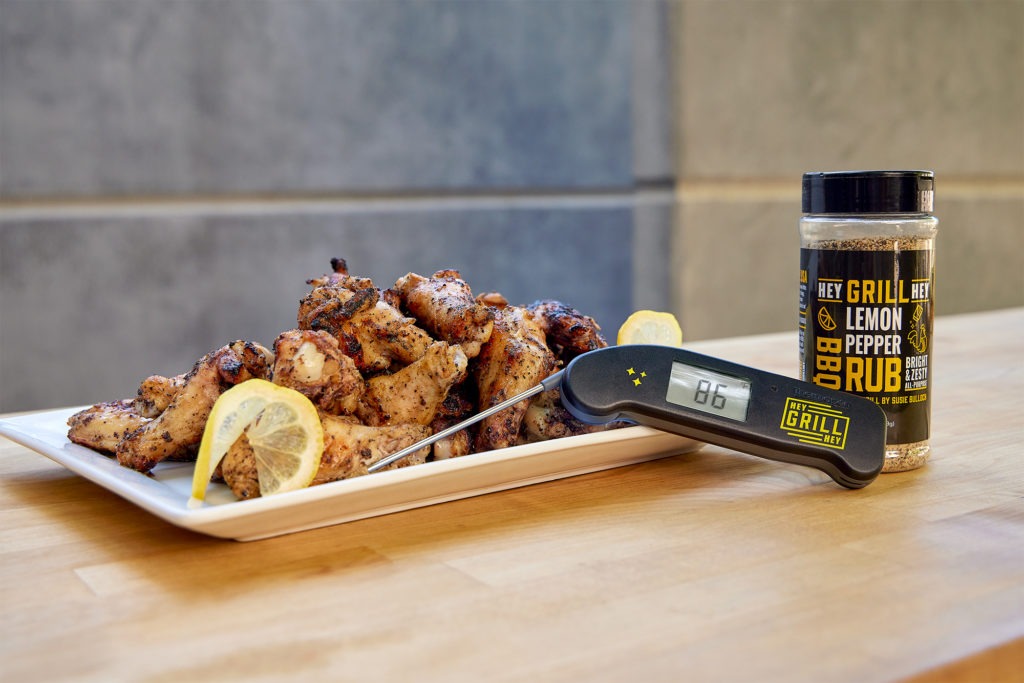
Grilling wings: difficulties and solutions
Grilled chicken wings obviously sound delicious, but they can have some problems. For instance, it can be hard to get crisp skin on a wing without burning it. Cooking fatty chicken wings over direct heat will lead to flare-ups and burned food, but cooking them indirectly leaves the skin squidgy and unpalatable.
To solve that problem, we use high heat. We set up our Billows™ BBQ Control Fan on our kettle grill with a big load of hot coals on one side of the kettle. Then we set our Smoke X2™ to 425°F (218°C). We cooked the wings indirectly, but in very high heat, which simulated frying, to a point. But then, when we’d reached a good doneness temperature, we moved the wings in batches to char and crisp over the direct heat side of the grill. To prevent flare-ups, we put several wings over the coals and put the lid on the kettle. The restricted airflow keeps the flames at bay while the chicken drips its fatty juices on the coalbed.
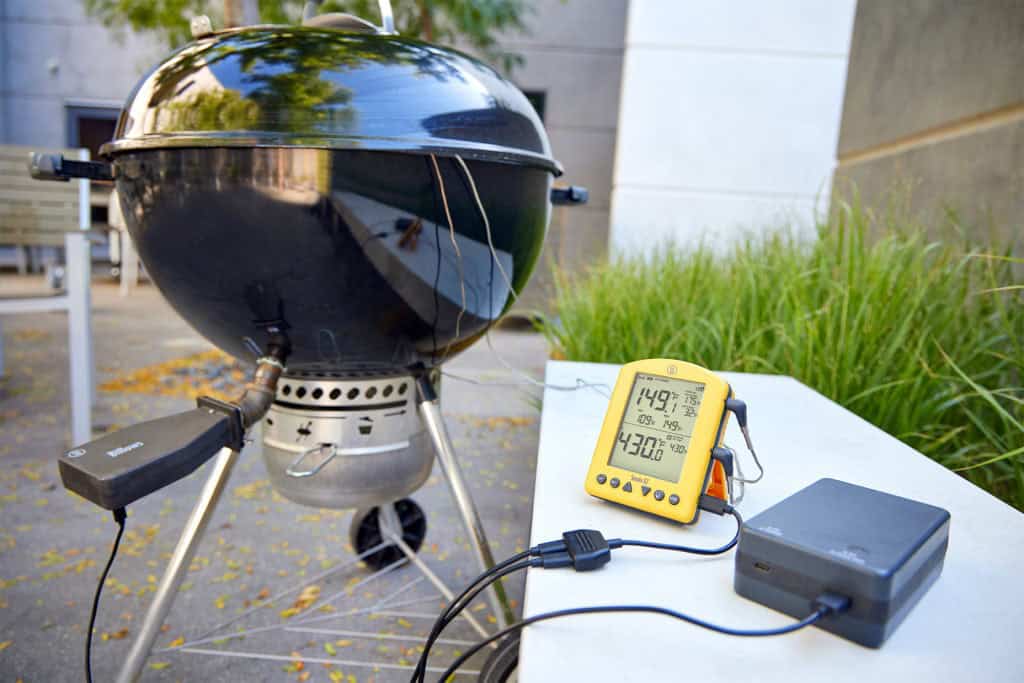
We gave them about a minute per side, covered, over the coals. As a result, we had wings with delicious, grill-y char on them, skin that was crisp (though not deep-fried crisp), and meat that was fully cooked through without being burnt on the outside. They were fantastic!
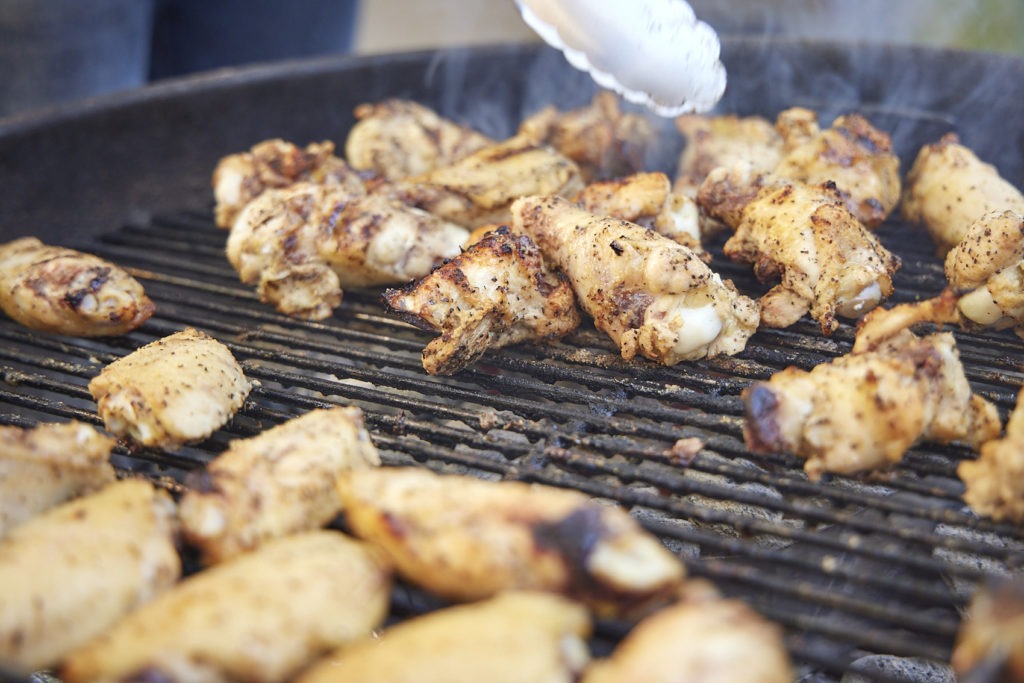
Grilled wing doneness
Another difficulty can be the doneness. This is not a problem that is unique to grilled wings—all chicken wings have a built-in doneness issue. Wing meat lies somewhere between light meat and dark meat, having characteristics of each. Light meat is best when not cooked above 160°F (71°C) but dark meat is best when cooked above 175°F (79°C). Though wings are very light dark meat, we find they are best when treated like the richer, more connective dark meat, so we wanted to cook them to a temperature that was at least 175°F (79°C). We set our Smoke X2 meat channel to that temperature and inserted a 2.5″ Needle Probe into a wing.
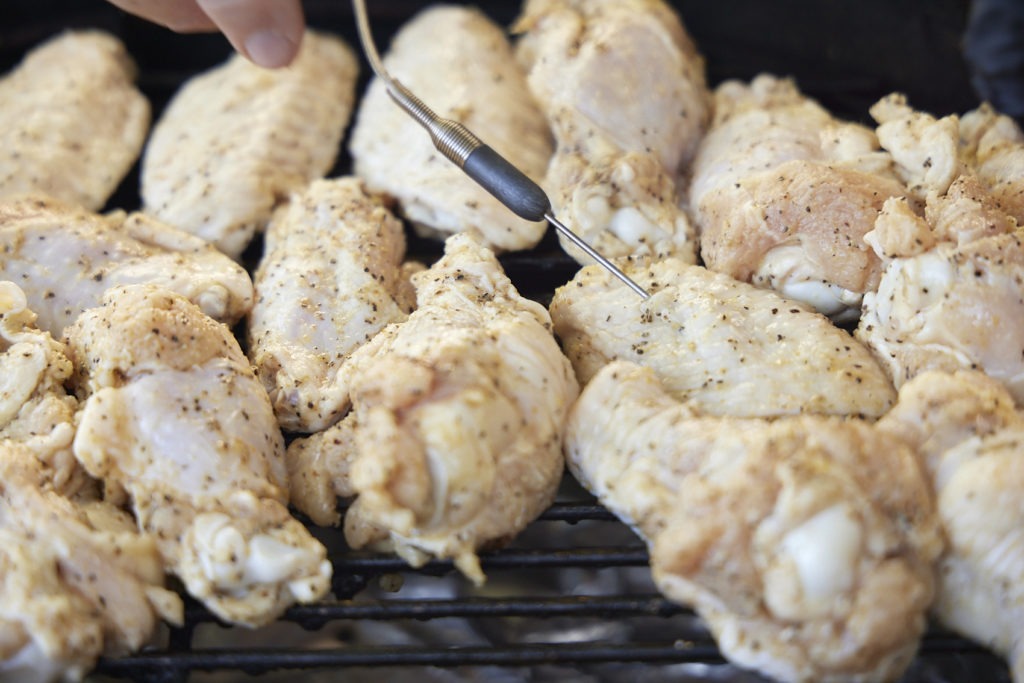
The indirect heat in our grill was not perfectly even, with wings closer to the coalbed cooking a little hotter, and larger wings cooking more slowly than smaller ones. Our Thermapen® ONE was indispensable in figuring out which wings needed to be moved, turned, or flipped for perfect doneness. And the speed of Thermapen ONE allowed us to check each wing quickly and accurately. After the sear over the coals, we checked nearly every wing as we removed it to our bowl for final saucing. It was quick and easy and we knew that every wing would be perfect. And they were!

Grill setup for chicken wings—a suggestion
Depending on your grill geometry and how much space is available to you, you may want to try the setup we used for this cook. We used our kettle with our Billows coming in through one side. We placed our coal basket opposite the Billows port and lined the coal-rack between the coals and the Billows with foil. Then we put on our lid with the vents, just cracked, above our Billows. This created an airflow that went under the foil, came up through the coals, and was drafted back across our chicken to the vent. It was a reverse-flow setup that provided efficient heat for our wings. On a kettle, it’s a great way to get a high-heat indirect cook, and a technique worth knowing.
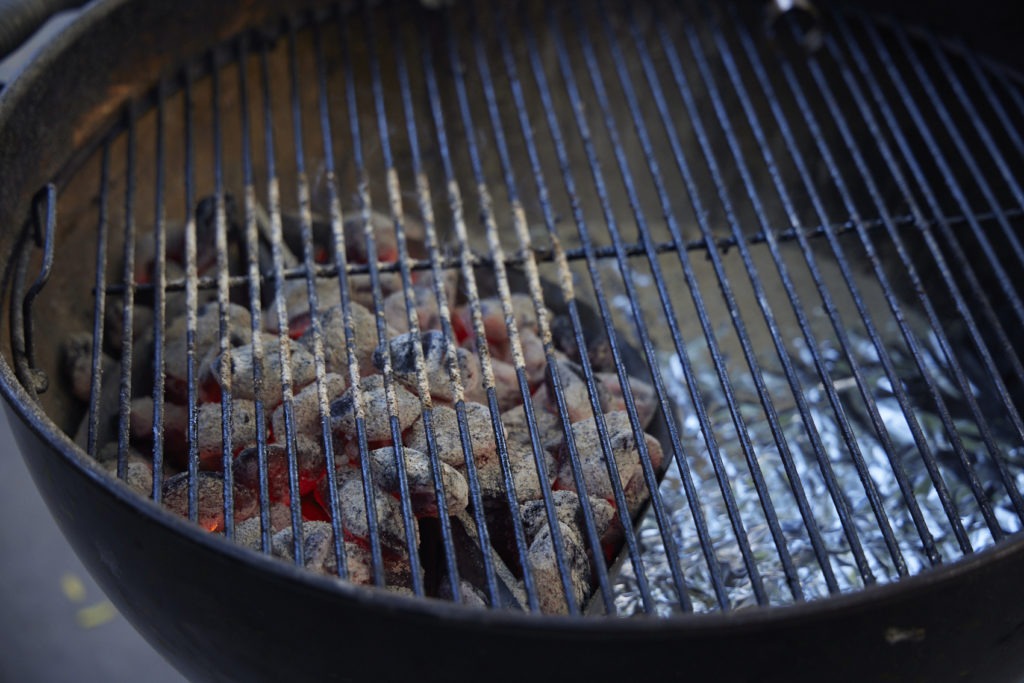
Seasoning and Saucing the wings
We used Susie Bulloch’s lemon pepper rub to season the wings before putting them on the grill—and they would have been great if we had left it at that. But we also took her advice and tossed them with a little melted butter and lemon juice right before serving, and the results were fabulous. The butter accentuated the richness of the wing and the lemon popped out against all that delicious fattiness. Gently melt the butter together with the lemon juice, not going to a scorching boil on it. If you keep the heat low, the butter will maintain a saucier quality than if it’s cooked hard, when it becomes more oily than creamy.
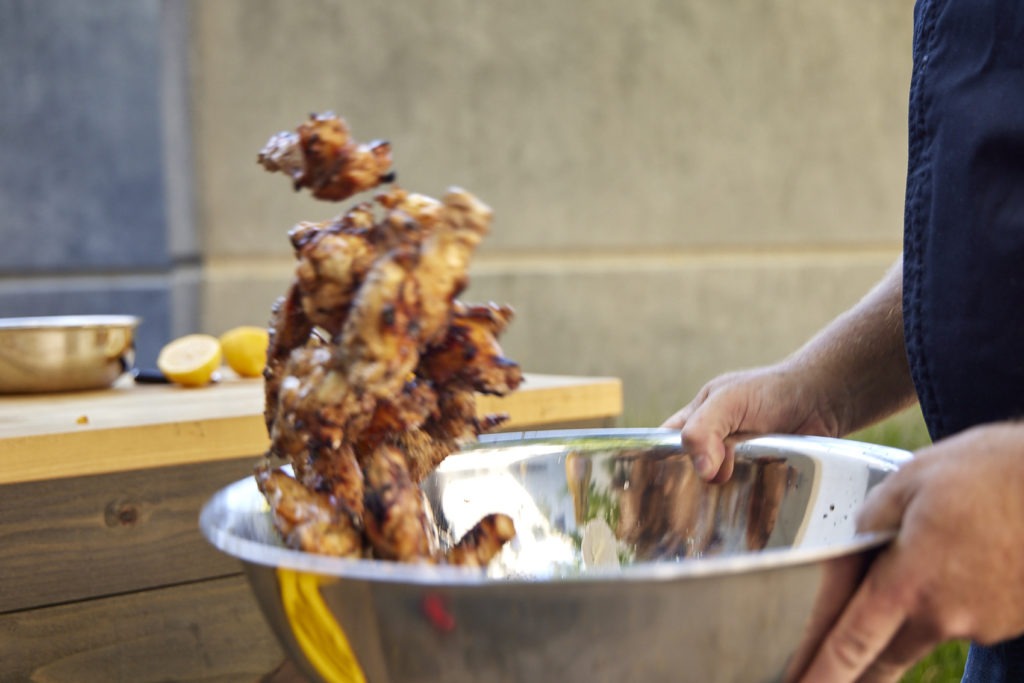
You should definitely give these wings a try. Their simplicity is key to their tastiness. The lemon pepper rub accentuates and accompanies the flavor of the chicken itself, and the crisp-char skin is addictive. You’ll want a whole pile of them, for sure! And with the thermal tips we’ve given you here, you know they’ll be fantastic.
Print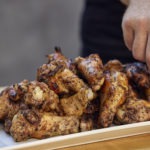
Lemon-pepper Grilled Chicken Wings: Recipe and Tips
Description
Adapted from Susie Bulloch’s recipe on HeyGrillHey.com
Ingredients
- 4 lb chicken wings, cut into flats and drumettes
- HeyGrillHey’s Lemon Pepper rub
- 4 Tbsp butter
- 2–3 tsp fresh lemon juice
Instructions
- Set up your grill for indirect cooking with your Smoke X2 and your Billows BBQ Control Fan controlling the temperature. Heat to 425°F (218°C).
- Pat your wings dry with paper towels and toss them with a liberal coating of the rub.
- Place the wings on the grill over indirect heat and insert a 2.5″ needle probe into one of them. Set the high-temp alarm for 175°F (79°C). Close the lid and cook.
- When the high-temp alarm sounds, start putting groups of wings over the direct heat to sear and char. Close the lid for about a minute, then open it, flip them, and close it again.
- Cycle in another group of wings until all have been seared and charred somewhat over direct heat.
- Temp the wings with your Thermapen ONE. As each wing reaches a temperature of 175°F (79°C) or higher, remove them to a bowl. If any are still not up to temp, close the lid on them and allow them to cook more.
- Melt the butter and lemon juice gently together. Pour it onto the wings and toss them.
- Pile the wings on a platter and serve them up! Serve with more lemon wedges or slices to squeeze onto the wings according to taste.
Shop now for products used in this post:


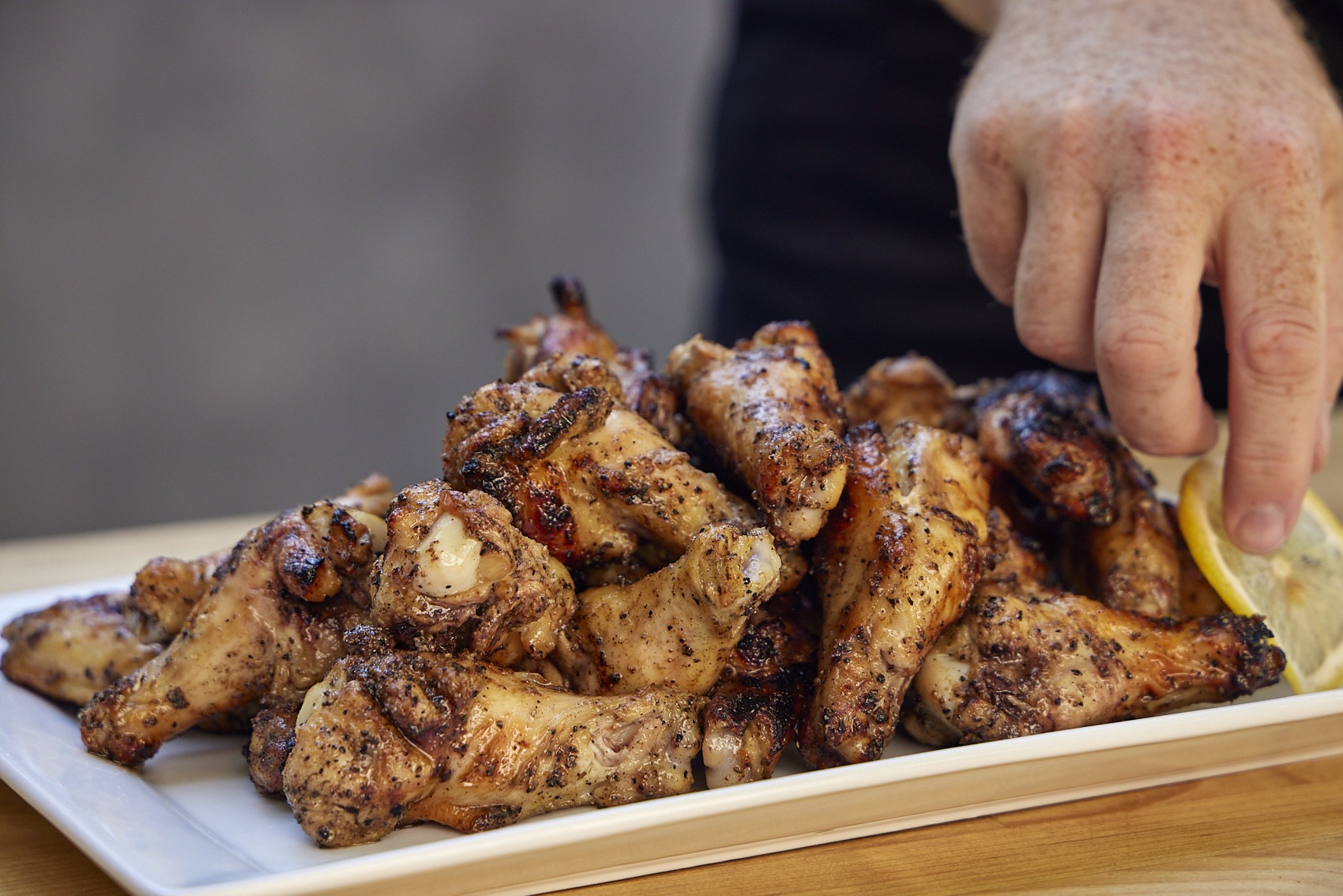
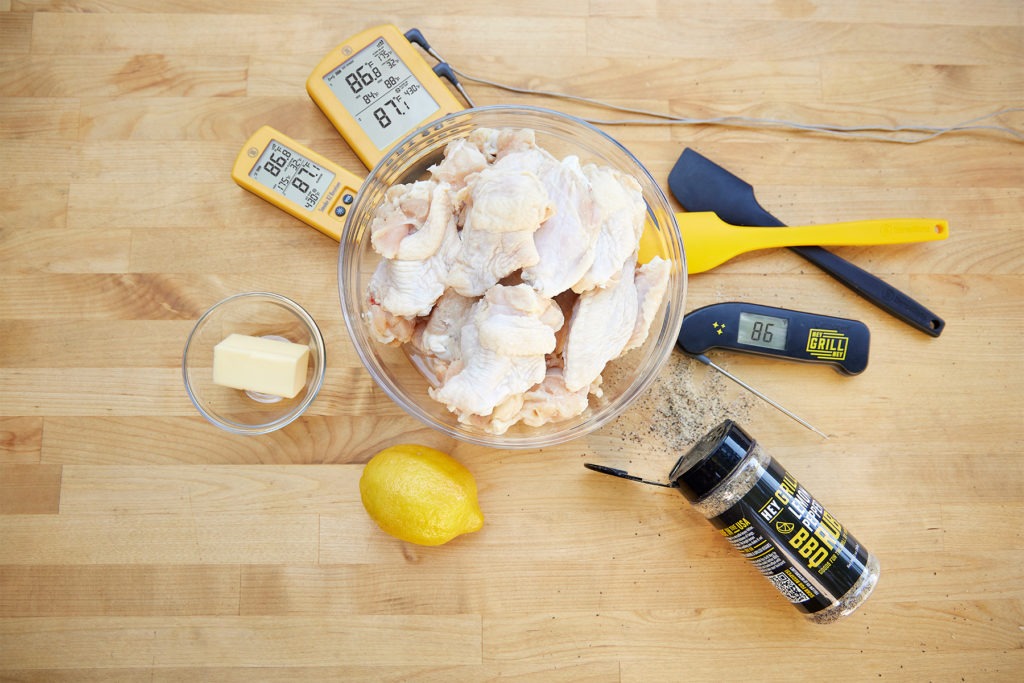
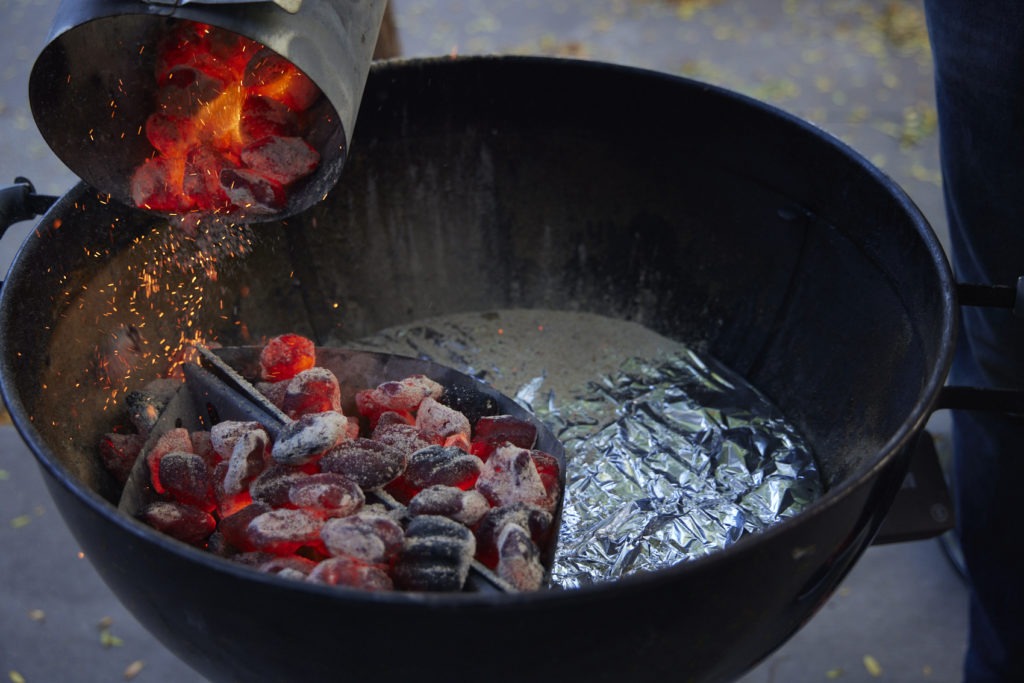
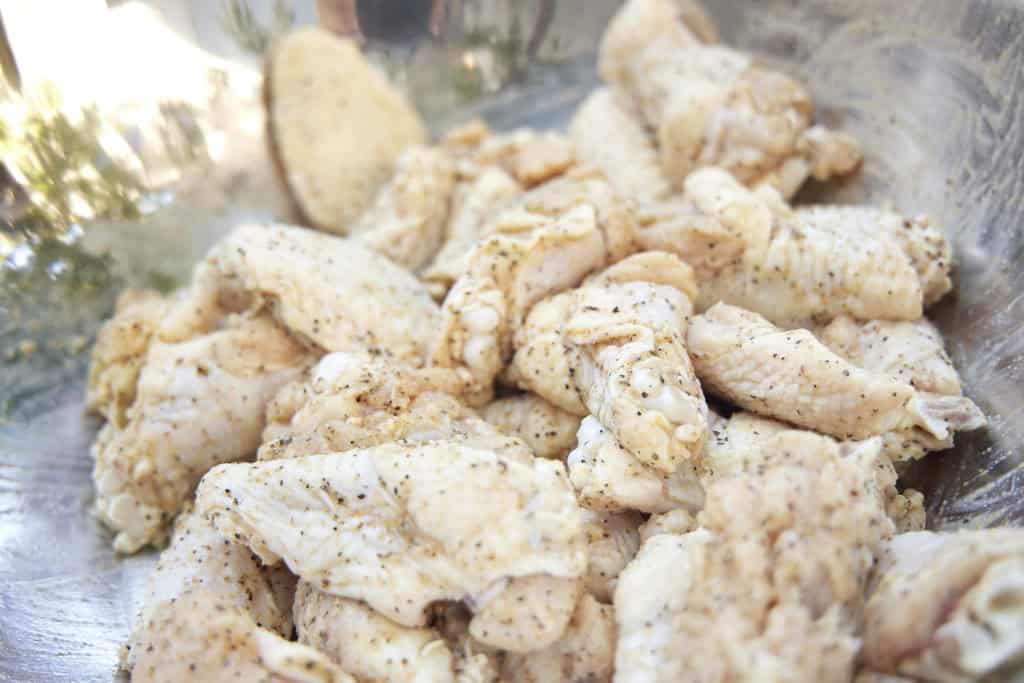
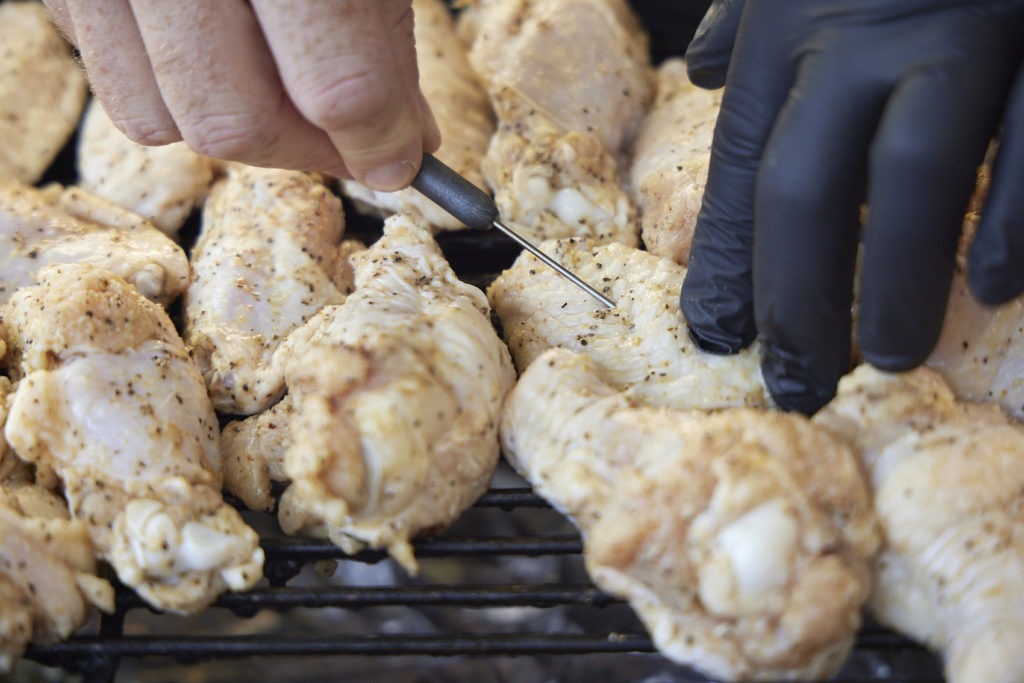
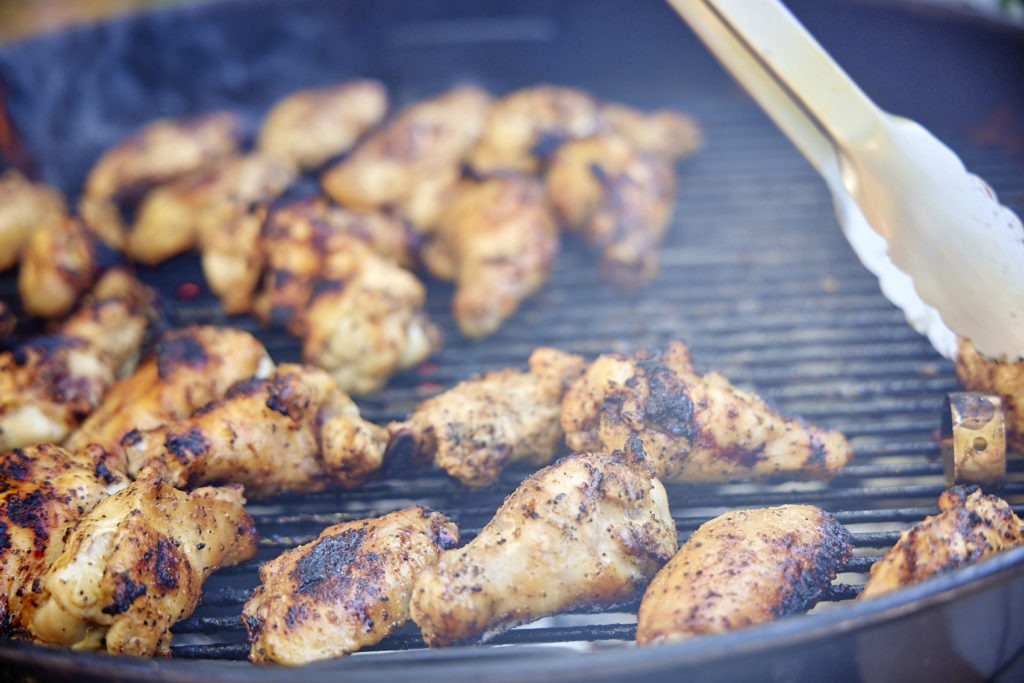
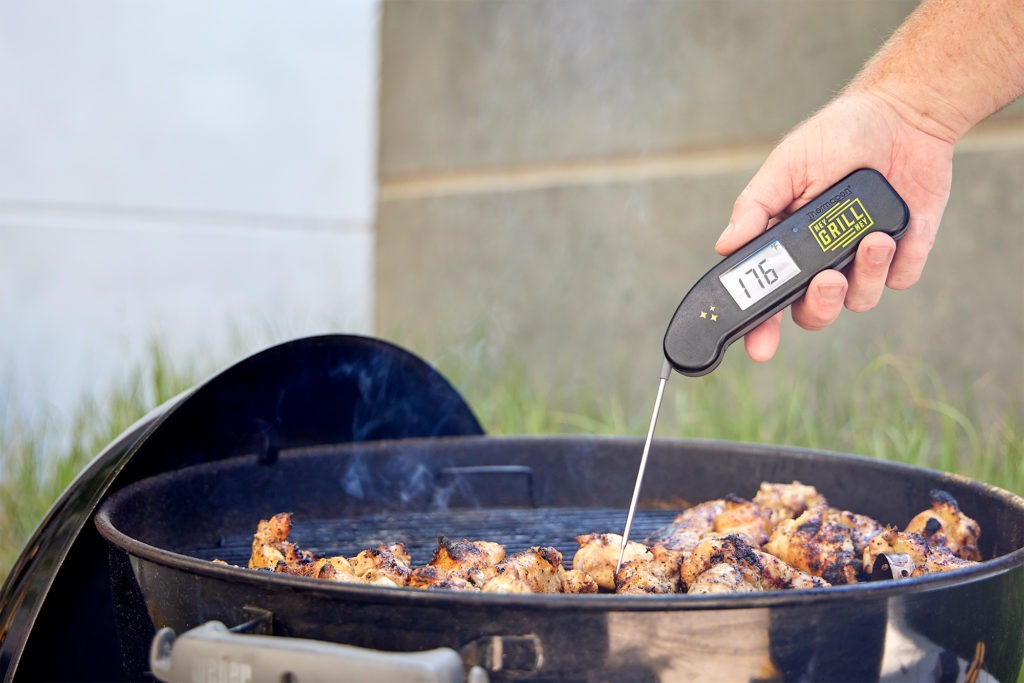
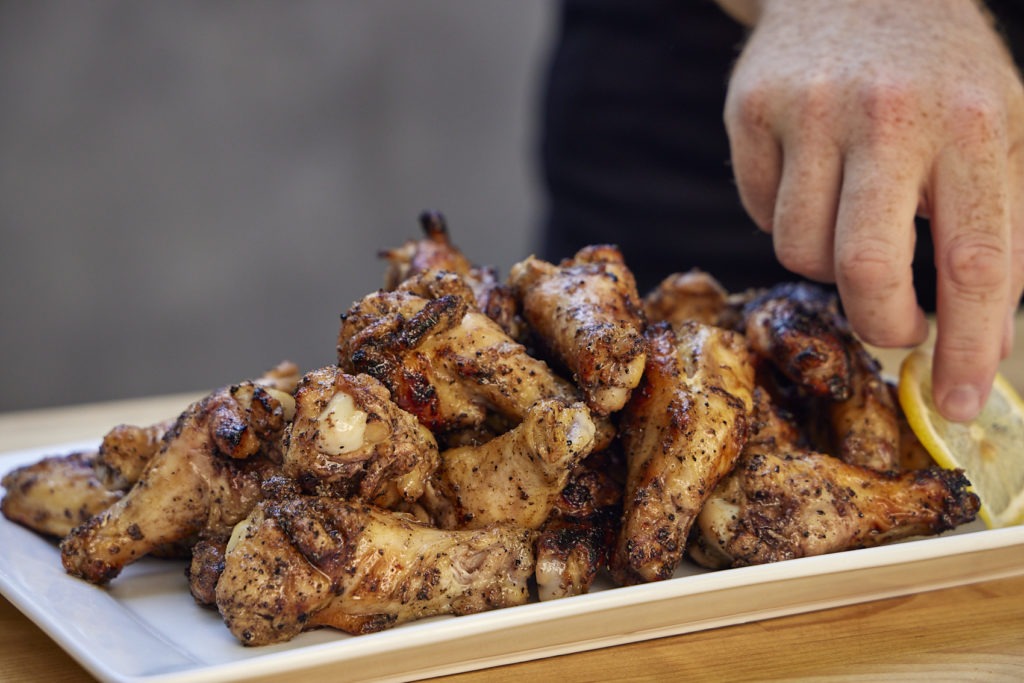

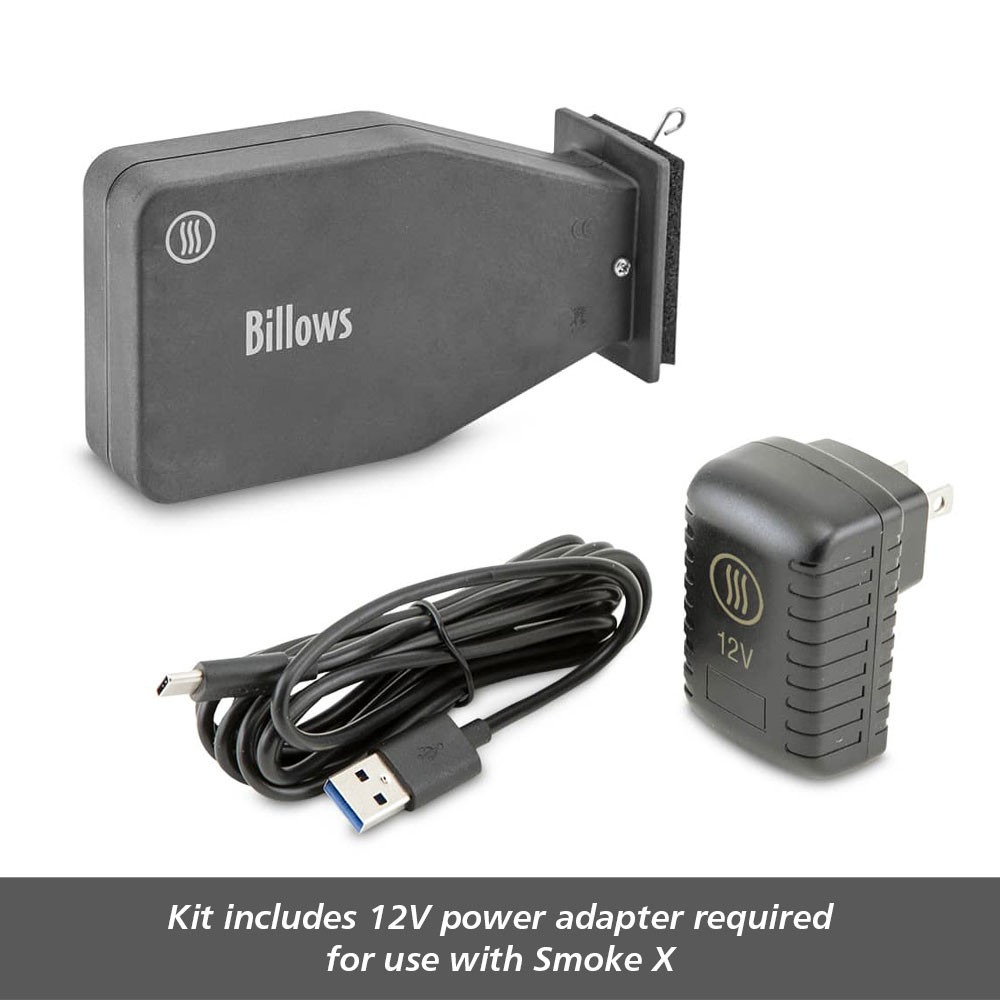

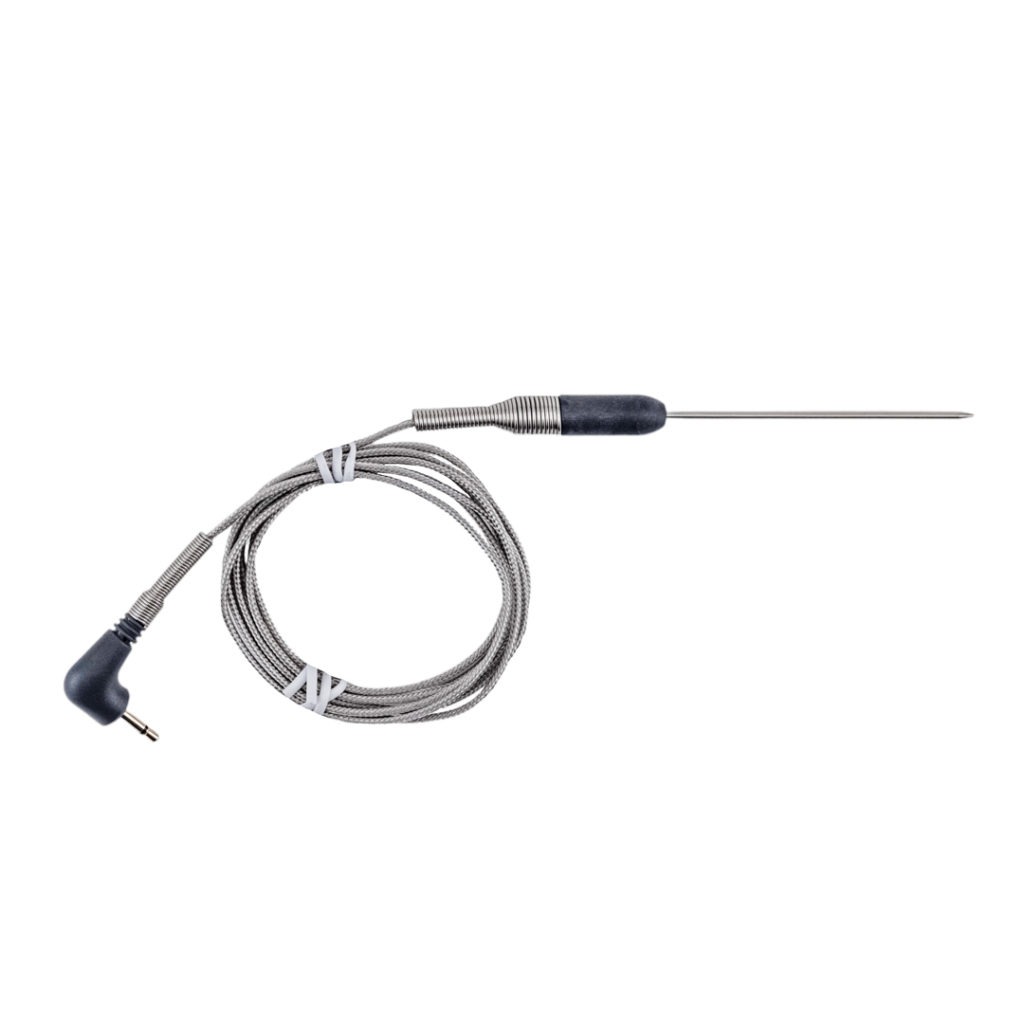
Can I do this using a gas grill?
Yes, I’d run it at medium to medium-high and keep a bit of a closer eye on things.